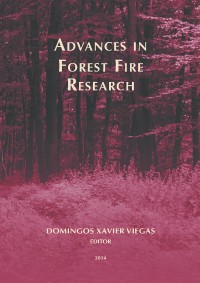Please use this identifier to cite or link to this item:
https://hdl.handle.net/10316.2/34158| Title: | Characterizing the secondary peak of Iberian fires in March | Authors: | DaCamara, Carlos C. Trigo, Ricardo M. Nascimento, Manuel L. |
Keywords: | Burned area;Meteorological factors;Extreme events | Issue Date: | 2014 | Publisher: | Imprensa da Universidade de Coimbra | Journal: | http://hdl.handle.net/10316.2/34013 | Abstract: | Mediterranean Europe is strongly affected by wildfires that burn half a million of hectares of vegetation cover every year causing extensive economic losses and ecological damage. Most studies about fire activity over the Iberian Peninsula (IP) are focused on the summer months, from June to September, as these correspond to the vast majority of BA, but it is important to note the occurrence of a secondary peak during late winter and early spring. This peak is particularly prominent during the month of March, although its relevance changes considerably for different Iberian regions. While the causes of fire activity in March in IP are mainly anthropogenic, either because of negligence or arson, meteorological factors also play an important role in the ignition and spread of wildfires. The main aims of the present study are threefold: 1) to identify the areas of the IP where fires in March play an important role and have a coherent inter-annual variability; 2) to relate burned areas in March to meteorological danger and 3) to characterize the synoptic conditions that constitute the meteorological background in extreme events (i.e. large burned areas in March). | URI: | https://hdl.handle.net/10316.2/34158 | ISBN: | 978-989-26-0884-6 (PDF) | DOI: | 10.14195/978-989-26-0884-6_184 | Rights: | open access |
| Appears in Collections: | Advances in forest fire research |
Files in This Item:
| File | Description | Size | Format | |
|---|---|---|---|---|
| 978-989-26-0884-6_184.pdf | 1.72 MB | Adobe PDF |  |
Items in DSpace are protected by copyright, with all rights reserved, unless otherwise indicated.
